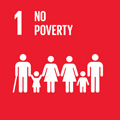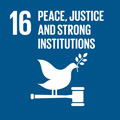- Docente: Pierluigi Musarò
- Credits: 9
- SSD: SPS/08
- Language: English
- Teaching Mode: In-person learning (entirely or partially)
- Campus: Bologna
-
Corso:
Second cycle degree programme (LM) in
Language, Society and Communication (cod. 8874)
Also valid for Second cycle degree programme (LM) in Sociology and Social Work (cod. 8786)
Campus of Ravenna
Second cycle degree programme (LM) in International Cooperation on Human Rights and Intercultural Heritage (cod. 9237)
-
from Sep 15, 2025 to Dec 04, 2025
Learning outcomes
At the end of the course, the student will be able to understand and analyze the way the western media covers the developing world and the humanitarian emergencies. Being more specific, the student will be able to understand and analyze: - the emerging and historical humanitarian narratives, with particular reference to the way in which the activities of NGOs are reported; - how we understand and explain faraway disasters; - how the media representations of suffering and violence has changed in the post cold war period and in the digital era; - the relationship between media, aid, corporate communication and branding; - the relationship between power, media and migration.
Course contents
Communication is understood in different ways by humanitarian actors. It can be described as a service, a skill, an area of expertise, an activity and a tool. However, if we consider humanitarian communication not as a means to an end, but as part and parcel of the end itself, we need to be aware that the representations and discourses produced by media, non-governmental organizations, government and industry in the Global North influence policies, practices and discourses of aid, development, war, natural disasters, displacement and migration, and connect cultures globally. Thus, the humanitarian imaginary shaped by these institutions is integral to the production of the Global South and to our perceptions of (the needs of) poor countries and vulnerable peoples, as well as the problem of (the failure of) international development and worldwide issues of poverty, inequality and injustice.
This course critically examines the role of communication in humanitarian contexts—not merely as a tool, but as constitutive of humanitarian action itself. Students will explore how media, NGOs, governments, and corporations—particularly in the Global North—construct and circulate discourses about crisis, suffering, and intervention. These representations shape not only public perceptions, but also policies, practices, and the humanitarian imaginary that frames the Global South.
Key Questions include:
• How is suffering mediated and communicated?
• What narratives dominate humanitarian storytelling, and whose voices are excluded?
• How do media representations construct symbolic and material borders?
• What ethical, political, and epistemological challenges arise in communicating global crises?
A special focus is dedicated to the mediated performances that contribute to create the spectacle of the humanitarian border, which is physically and simbolically enacted by the different actors involved in contemporary management of migration, and strictly related with climate mobilities regimes.
Examining humanitarian communication through various forms of aesthetic activism - documentary, photojournalism, benefit concerts, performing arts - the course invites students to explore how the circulation of humanitarian images and narratives impact the peoples it aims to serve, and what can we learn about global inequality from the stories associated with it.
Finally, using Sheller’s (2018) concept of “mobility justice” and Mbembe’s (2020) “right to breathe” this course reflects on how race, class, and gender intersect with narratives on displacement and environmental crisis.
Readings/Bibliography
- Calhoun Craig (2008): The Imperative to Reduce Suffering: Charity, Progress, and Emergencies in the Field of Humanitarian Action. In: Barnett, Michael/Weiss, Thomas George (eds.):Humanitarianism in Question. Politics, Power, Ethics. Ithaca: Cornell University, 73-97.
- Chouliaraki Lilie (2012): The Ironic Spectator. Solidarity in the Age of Post-Humanitarianism. Cambridge: Polity Press (Chapters 1 and 2).
- Fassin Didier (2007): Humanitarianism as a Politics of Life. In: Public Culture, 19 (3), 499-520.
- Kurasawa Fuyuki (2019): On Humanitarian Virality: Kony 2012, or, The Rise and Fall of a Pictorial Artifact in the Digital Age, Visual Communication
- Bunce Mel (2019), Humanitarian Communication in a Post-Truth World. In: Journal of Humanitarian Affairs: https://www.manchesteropenhive.com/view/journals/jha/1/1/article-p49.xml
- Scheel Stephan and Tazzioli Martina (2022), Who is a Migrant? Abandoning the Nation-state Point of View in the Study of Migration, Mig. Pol. 1.
- Musarò Pierluigi (2019), Aware Migrants: The role of information campaigns in the management of migration, European Journal of Communication, 34, pp. 629 – 640.
-
Giacomelli Elena, Pierluigi Musarò (2025), Climate Mobility Justice: Narratives and Visual Politics of the Panicocene, Palgrave Macmillan, UK (Chapters 4, 5, 6, 7)
- Musarò Pierluigi, Moralli Melissa, Parmiggiani Paola (2019), Borders Kill. Tania Bruguera’s Referendum as an Artistic Strategy of Political Participation, «JOURNAL OF MEDITERRANEAN KNOWLEDGE», 4(2), pp. 137 - 160
- Cashing in on Crisis. How the world's largest investors fuel and profit from climate change and border militarization, TNI, 2022: https://www.tni.org/en/publication/cashing-in-on-crisis
-
Salih R., On Reversing Reality. The Cunning of Impartiality on Gaza, Public Anthropologist 7 (2025) 244–261
- Mbembe, A. (2000): The universal right to breathe, Critical Inquiry. Available at: https://critinq.wordpress.com/2020/04/13/the-universal-right-to-breathe/
In preparation of the exam please read the:
- Loughnan Claire and Murray Philomena, ‘Combatting Corrosive Narratives about Refugees’, CONREP Policy Report, July 2022 > https://arts.unimelb.edu.au/__data/assets/pdf_file/0003/4231587/CONREP-Policy-Report-3_Narrative_Loughnan-and-Murray_final.pdf
- Connecting Climate Justice & Migrant Justice: A Guide to Countering Dangerous Narratives, Brief guide available at: https://www.jcwi.org.uk/communicating-migrant-justice-a-guide-to-countering-dangerous-narratives
- IOM X C4D Toolkit: http://iomx.org/iom-x-c4d-toolkit/
Take these as guides to frame your group analysis, you do not need to follow it closely.
- What policy communication works for migration? Using values to depolarise: https://www.euneighbours.eu/sites/default/files/publications/2020-08/EMM4_OPAM__3rd_chapter_Using_values_to_depolarise.pdf
- https://framingclimatejustice.org/
Further readings and references (book chapters, articles, papers, documents, video) will be provided during the course.
Teaching methods
The course is based on lectures, seminars by invited experts, and students-led seminars (group presentations). Each week includes a seminar (lecture + collective discussion), assigned readings, and a visual case study or media analysis. Group assignments will be planned as part of the final evaluation.
Please note that the first 10 hours of lessons will be taught (also) in blended mode (i.e., with the option of attending both in-person and remotely) to encourage the widest possible student participation given the ongoing adjustments to housing arrangements. Blended mode will be discontinued after the first five lessons, with in-person courses being offered again.
Assessment methods
Attending students’ peformance will be assessed through one individual short essay, one group assignment and a final written exam.
Short Essay will be on a focused topic of students’ choice, drawing on research and careful analysis of select readings for the class.
The final exam will include a list of 5 open ended questions on the topics of the lectures and the reading list. Each question will be given a score from 0 (missing answer) to 6 (=A, excellent answer). The assessment is based on the number of answers, the ability to use the correct terminology, the reference to the appropriate concepts and theories, the identification of critical issues, the clarity and soundness of the argumentation.
For the assignments - presentations in small groups (3-4 persons per group) - students are expected to analyse the communicative practices of artists or activists using a toolkit that will be introduced in class. The assignments will be assessed considering the originality of the work, the ability to refer to the appropriate theories and concepts, the use of the correct terminology, the interpretation of the data, the quality of the presentation, the clarity of the argumentation.
For those students who did not attend the course, or do not pass the exam, or wish to improve their score, it is MANDATORY to write a short article and a paper before the oral exam (see info below).
ASSESSMENT METHOD AND CRITERIA
Short Essay: 20% > 1500–2000 words, on a topic of choice using course theories and readings.
Active participation and group presentation: 30% > Collaborative visual analysis of activists or artistic media (creative formats encouraged).
Final exam: 50% > In-class written exam with 5 open-ended questions based on readings and lectures.
To pass the course you must pass ALL assessments.
To register the final grade is necessary that you enrol in the official dates in the website Almaesami (https://almaesami.unibo.it/almaesami/welcome.htm).
Alternative Exam Option for non-attending students: Short Essay of 1500 words + 5000 word paper with references to all course readings + oral exam on the readings. Students have to deliver article and paper by email at least 2 weeks before the data of the oral exam and then they will discuss it (and the program) during the exam. It is not possible to do the oral exam if the papers are not delivered before.
For more information on this option send an email to the professor.
Teaching tools
Active participation in class is a crucial part of your learning. Through news articles, videos, films and documentaries, web sites, or readings, you will help the teacher to stimulate discussion during the class.
Students with different abilities or SLD who require educational adaptations or compensatory tools are invited to communicate their needs to the teaching staff to coordinate appropriate interventions with the competent bodies.
Office hours
See the website of Pierluigi Musarò
SDGs




This teaching activity contributes to the achievement of the Sustainable Development Goals of the UN 2030 Agenda.
